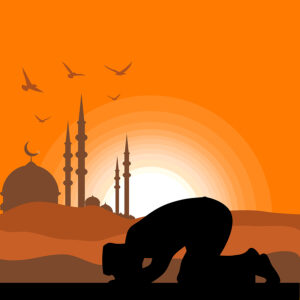March and April have traditionally been the happiest times of the year for Iranians for many years. You could always see the cheering crowd shopping in the streets, playing music (less after the Islamic Revolution), talking to each other, counting the days until the start of a new year, and celebrating with their loved ones.
However, in recent years this happiness has faded noticeably. Only a few days remain until the Persian New Year on March 21, but Iranians who have suffered from intolerable injustice and poverty are now more tired and desperate than ever.
Poverty is the first and foremost reason for this massive unhappiness. You can see photos and videos of people on social media declaring the amount of food they could buy on a daily basis reduced a lot. During the last few weeks, the price of chicken has doubled, It is only one of the regular items people need to avoid dying of hunger. This might sound unbelievable to a Western reader, but for two years now the cost of groceries has increased each week. Therefore, every time Iranians go shopping they have to either pay more than they did the last time or omit some items on their shopping list.
According to a report published by the Statistical Center of Iran in 2019, 50 percent of the people live below the poverty line. In May 2019 a report published by the parliament predicted this number to increase to 57 percent by the current month.
Many of the Iranian elite believe the initial cause of the high inflation rate and exceeding poverty was the United States’ withdrawal from the Iran Nuclear Deal” announced on May 8, 2018. However, ordinary Iranians and not the politicians know better than anyone that the result of this devastating situation is the systematical corruption in the government in addition to its faulty foreign policies, toward America in particular.
Unfortunately, poverty is not the only cause for Iranians’ sufferings. “Bread, Labor, Freedom” was a famous slogan heard during protests in 2018, 2019, and even in students’ movements before that.
Literally, no one, except maybe those connected to the government, has the privilege of living what in other countries is called a “Normal Life.” Women are forced to wear compulsory hijab and if they disobey this law, will be taken to prison. For instance, 22-year-old Saba Kord Afshari was arrested on June 2, 2019, merely because she appeared without a scarf and talked about it on social media, expressing her disapproval of this unfair law in a peaceful way. She was given a 15-year prison sentence. She is only one of the tens of women who got similar sentences in their attempts against compulsory hijab.
During the mass protests both in 2018 and 2019, many young people were shot and killed by police in the streets. Many more were arrested and received death sentences. Navid Afkari, a 27-year-old wrestler was brutally executed despite Iranians’ public objections using the hashtag #DoNotExecuteNavidAfkari on Twitter and Instagram. Many international organizations, including International Olympic Committee president Thomas Bach, expressed “extreme concern” over the case of Navid Afkari. However, the government executed him on September 12, 2020.
These were only some examples of the struggles Iranians have to deal with every day. Each and every one of these catastrophes has led Iran to be a constantly shell-shocked society. According to a recent report “The number of suicides in Iran in the spring of 2020 increased by 23 percent compared to 2019.”
Therefore, as we approach the Persian New Year, when Iranians have used to be happy for decades and even centuries, it is not a surprise why there are no more signs of happiness in such a desperate society.

